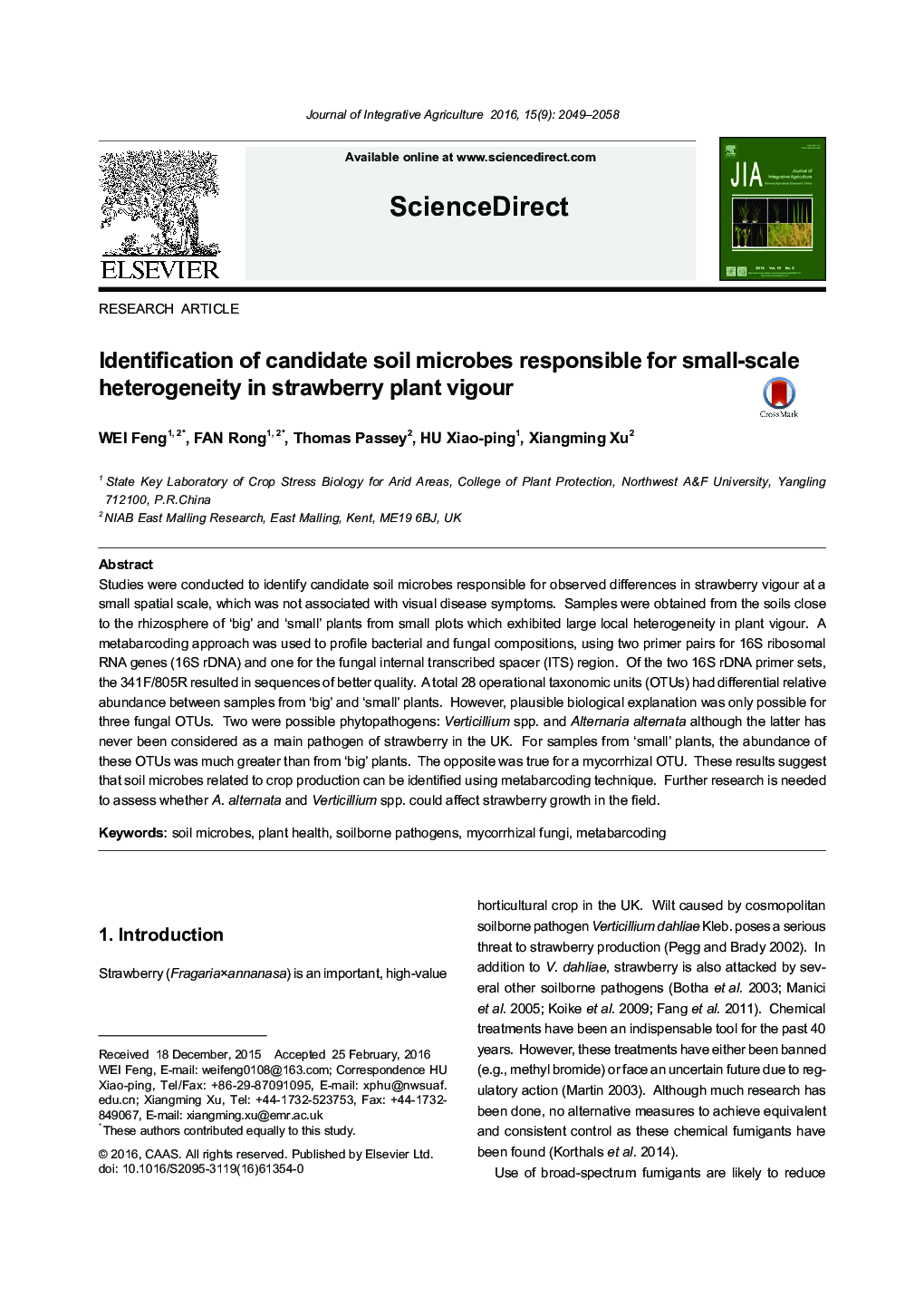| Article ID | Journal | Published Year | Pages | File Type |
|---|---|---|---|---|
| 10179954 | Journal of Integrative Agriculture | 2016 | 10 Pages |
Abstract
Studies were conducted to identify candidate soil microbes responsible for observed differences in strawberry vigour at a small spatial scale, which was not associated with visual disease symptoms. Samples were obtained from the soils close to the rhizosphere of 'big' and 'small' plants from small plots which exhibited large local heterogeneity in plant vigour. A metabarcoding approach was used to profile bacterial and fungal compositions, using two primer pairs for 16S ribosomal RNA genes (16S rDNA) and one for the fungal internal transcribed spacer (ITS) region. Of the two 16S rDNA primer sets, the 341F/805R resulted in sequences of better quality. A total 28 operational taxonomic units (OTUs) had differential relative abundance between samples from 'big' and 'small' plants. However, plausible biological explanation was only possible for three fungal OTUs. Two were possible phytopathogens: Verticillium spp. and Alternaria alternata although the latter has never been considered as a main pathogen of strawberry in the UK. For samples from 'small' plants, the abundance of these OTUs was much greater than from 'big' plants. The opposite was true for a mycorrhizal OTU. These results suggest that soil microbes related to crop production can be identified using metabarcoding technique. Further research is needed to assess whether A. alternata and Verticillium spp. could affect strawberry growth in the field.
Related Topics
Life Sciences
Agricultural and Biological Sciences
Agricultural and Biological Sciences (General)
Authors
Feng WEI, Rong FAN, Thomas Passey, Xiao-ping HU, Xiangming Xu,
